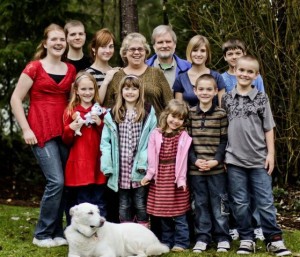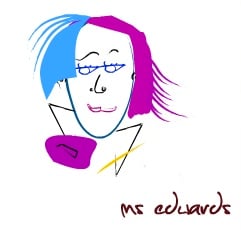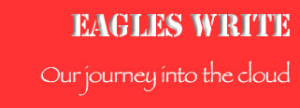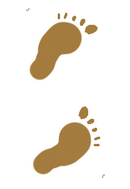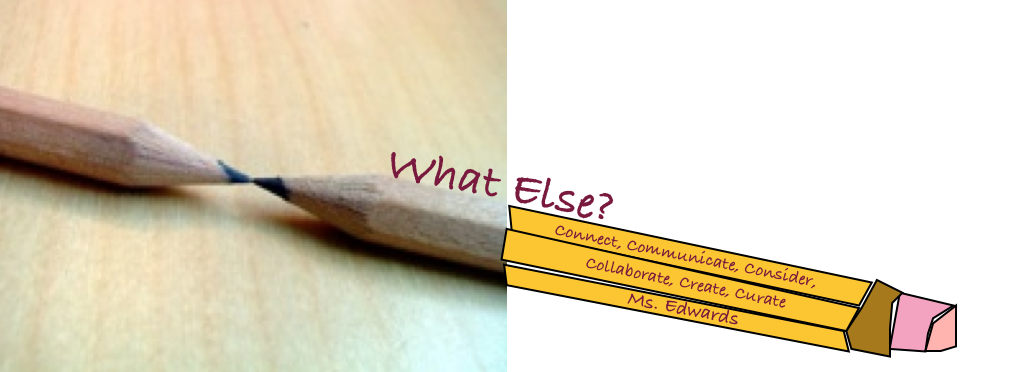I started this blog in August of 2007.
It’s transformed over the years, as our lives do.
I don’t want to lose the history, so on this page I present past pages and information in one long page. It is of interest mainly to me, of the journey I have taken myself and with my former students.
History. It’s a story.
Below is the history of this blog.
About
What else could I do? write? sing? create?
If a kid doesn’t understand, what else could I do to help?
I’m a wife, grandmother, mom, sister, teacher, teacher, teacher.
I wonder, but wonder was taken already. So, what else?
WELCOME
Please read the Welcome in the right margin and Guidelines for basic information about our blogging.
Students today enjoy the connectedness of social networking; it is part of their very being. My goal is to bring my instruction into that cloud to teach the content required in ways that inspire online responsibility and ethics in this new, very public world.
In addition, I, as I connect with other educators about the emerging issues and pedagogy of connected learning, I reflect here on those issues, pedagogy, and connections that make for a diverse dialogue about what education could be. These are my reflections.
Please remember we are all learning. Neither my words nor those of my students represent our school district, and our words belong to each of us as we strive to become better learners.
We question, we converse, we express, we suggest, we explore. We ask, “What Else?”
I am learning together with my colleagues in my professional learning neighborhood as my students are also learning together as they build their neighborhoods and practice digital citizenship.
We are learning forward. Thank you for your patience as we grow.
Affiliations
NCTE
More About Me
Sheri Edwards Website
OUR TECH BEGINNINGS
Focus, 2013
This blog will include reflections on teaching and lessons as well as connections and conversations with my Personal Learning Network as a model for my students. This year I am participating in #ETMOOT — a participatory, self-directed learning community.
I am learning, and this blog represents my learning. Please be patient with my work and that of my students. Each work represents the author’s ideas and does not represent our school district.
Our Tech Beginnings —- 2009
A review of our start with technology
Our class wiki (http://whatelse.pbwiki.com) is up and running. I created the project as part of PBWiki Summer Camp to promote the use of wikis in the classroom as a collaborative writing format. As a result, I am now a PB Wiki Educator 🙂 so if teachers or principals have questions/concerns/suggestions, please contact me. I’d be glad to hear your ideas or offer suggestions about wiki implementation.
In addition, lesson summaries for each class are updated daily. Students refer to these in class for links and directions; parents and students can view what was missed if absent. Links:
- What Else 5 Writing Lesson Summaries
- What Else 6 Writing Lesson Summaries
- What Else 7 Writing Lesson Summaries
- What Else 8 Writing Lesson Summaries
- What Else Reading Lesson Summaries
- Note: Our lesson summaries are now here: Planbook
Spelling words could be tested and played with by logging in to my name, Sheri Edwards, at http://www.spellingcity.com/. Each Monday, the students created a class list by generating a list of words from base words I provided. Students use their list of prefixes and suffixes to generate the new words. We discuss spelling patterns and meanings. Example:
Base word: relate
Generated words: related, relating, unrelated, relation, relationship, relative, relatively
The base words and tricky words were placed each week on the Spelling City site. Students searched for my name, found the word list for study, and played games or took a test. Great online resource.
Past Projects:
One project for eighth grade, “Letters to the President” sponsored by Google Docs and the National Writing Project, can be viewed at: http://www.letters2president.org/. Students met the goal to investigate and discuss issues and concerns they would like the future president to address. Students collaborated in Google Docs and wrote letters in Google Docs which transferred to the above website of participants’ letters, a fantastic opportunity for students to express themselves responsibly and sincerely to possibly effect change in the future.
Next, grade eight teams worked on “Who Are We” projects incorporating the use of digital media/art that expresses the textual content. The link provides the direction page. Some pages are password protected.
Seventh grade studied Polar Problems, researched the effects of global warming on the Arctic and us. They wrote a short persuasive piece in online multi-media. This unit prepared us for our WASL persuasive writing test.
Concerns
As the year started and students filtered in, the eager faces mingled with those students who are less concerned with education and more concerned with being center stage with inappropriate language and actions. I thought about the implications the work of often contrary students could bring to the project; would they continue their negative, distorted views? In the next instant, though, I knew that it is precisely these students who need the opportunity to participate. Their immediate issues and concerns can be transcended as the the whole class deals with and discusses issues of the community. How else will all the students become engaged responsibly if we (I) don’t invite all students? Our purpose and my stated goal is to facilitate student civic responsibility; I believe the students, all of them, will want their voices heard, and they can only be heard if they learn the protocol for responsible sharing. I share these feelings and concerns I have so my students know how carefully and thoughtfully I plan for their successful education and hope for their future.
Results
The grade eight students responded with fantastic energy and focus to complete Web 2.0 projects. Most students researched well and used data to persuade the president to tune into their problems and suggestions for solutions. Some were not as well-researched, but voiced concerns and solutions. Only one student broke the contract for expected netiquette and lost two weeks of computer privileges; the student accepted responsibility and re-agreed to appropriate participation. The other students have maintained and applied our “be overly friendly and positive” expectations. We, the students and myself, are practicing our online civic responsibilities
Challenge
So, students, what do you think? Are you willing to join students across the nation in “writing the future” by learning how to address concerns to a public persona with thorough discussion, research, and writing?
Note: Our lesson summaries are now here: Planbook LAGoals
Connected in the Middle
Meet us: The Connected in the Middle Educators
Teach the Whole Child
Test Tensions
Every year we worry about the scores. Every day we strive to guide students in the learning needed to improve their scores. What do they mean, and how have they changed education? Are we now just teaching to the test instead of teaching to the child — the child’s needs with regards to becoming a thinking, caring, productive person? Are we causing children to lose talents because they aren’t exposed any more to art, music, and the joy of learning?
Visit:
http://www.youtube.com/watch?v=XTRKHR-6i3k
We believe that blogging, and preparing for blogging through reading and research will help our students and help answer the question, “What do we really want for our children?”
Archived Links
Teacher Newsletter Archive 2009-2016
Guidelines
Who can blog? How will we blog?
Guidelines
On our class blog, Eagles Write, please read our rules (in the left column)
and guidelines to understand how and why we blog.
Print your copy by clicking here: The Rules For Eagles
Why do we blog?
Read the reasons on our wiki: Why Blog
Important Netiquette Links
Net Smartz
On Guard Online
I Keep Safe
See Also these schools’ rules:
~~~~~~~~~
Digital Footprints
Your online presence — your comments, posts, and creations– is your digital footprint,
a path back to you — prepare your path wisely!
~~~~~~~~~~~~
How will your words touch the world? It’s up to you !
Live to make the world less difficult for each other. ~ George Eliot
LEARNERS
Students today enjoy the connectedness of social networking; it is part of their very being. My goal is to bring my instruction into that cloud to teach the content required in ways that inspire online responsibility and ethics in this new, very public world.
In addition, as I connect with other educators about the emerging issues and pedagogy of connected learning, I reflect here on those issues, pedagogy, and connections that make for a diverse dialogue about what education could be. These are my reflections.
Please remember we are all learning. Neither my words nor those of my students represent our school district, and our words belong to each of us as we strive to become better learners.
We question, we converse, we express, we suggest, we explore. We ask, “What Else?”
I am learning together with my colleagues in my professional learning neighborhood as my students are also learning together as they build their neighborhoods and practice digital citizenship.
INTRO IDEAS
Need an idea to start blogging?
Note: Remember to draft your writing on our wiki or in Google Docs or OWN where you can obtain feedback and collaborate with peers. Remember to edit your writing for capitals, spelling, paragraphing, and punctuation.
Remember: Always be overly kind and positive when commenting or sharing your opinion.
Ideas
Part of our writing class includes current events reading so we “learn stuff.” What have we read in writing class? What did you research? What is your opinion? What is important to share? What do you want to know from your readers about this topic?
Read Tween Tribune for more kid news.
Read other people’s blogs for ideas and to develop new ideas on your own. Use your OWN Online Writing Notebook or your journal to write your ideas so you don’t lose those special ideas you considered. This link Writing Prompts and Ideas (OWN) includes blogs for you to read. Just scroll down on the page to groups of blogs by classes and students around the world. Find an interesting blog with at least one sentence that captures your interests.
Writing Organization
When responding to another blog or as a comment, remember to:
Responding to a Quote Guidelines:
Title: Ask a question; Use Alliteration; “Like a ______”
Paragraph 1: Grab the reader’s attention with a question or fact. Write the quote within quotation marks. Write what the quote means in your own words.
Paragraph 2: Give an example of what the quote means to you by explaining an experience you (or someone you know or heard about) has had.
Paragraph 3: Tell how your experience connects to the quote. End with a question to the reader or author.
Source: (Blue Write Source, pages 274-276)
Comment
While you read the blogs of others, find one to which you especially connect. What part especially did you like or connect to?
Paragraph 1: Grab the reader’s attention with a question or fact related to the quote. Next write the quote in “”. Write what the quote means in your own words.
Paragraph 2: Give an example of what the quote means to you by explaining an experience you or someone you know or have heard about has had.
Paragraph 3: Tell how your experience connects to the quote. End with a question back to the blogger.
Source: (Blue Write Source, pages 274-276)
Other Resources:
Wiki Directions and Templates:
Blog Quote and/or Comment Template
Ideas:
Writing Prompts and Ideas (OWN)


